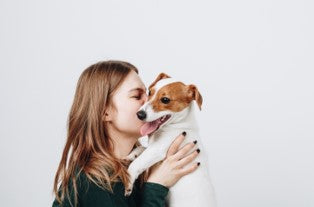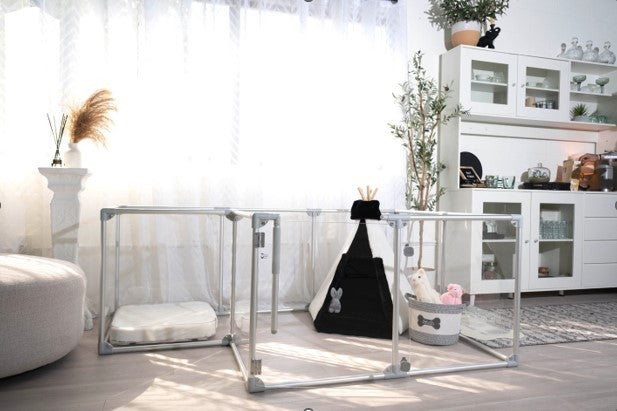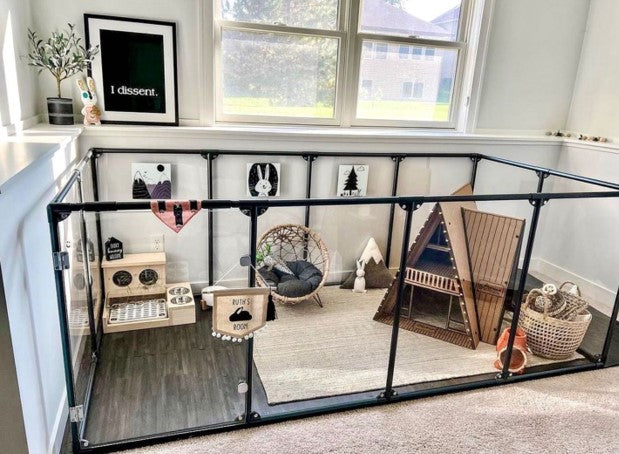In the dynamic and often busy lives of pet owners, ensuring the safety and happiness of our furry friends is always a top priority. Indoor dog pens emerge as a popular solution, offering a blend of security, convenience, and comfort for pets. However, like any choice in pet care, it's essential to weigh the benefits against the potential downsides. Let's delve deeper into the top 10 pros and cons of using an indoor dog pen, aiming for a comprehensive understanding that will help pet owners make the best decision for their canine companions.
The Pros Explained:
- Safety First (Safety and Security) The foremost benefit of an indoor dog pen is the assurance of your pet's safety. Dogs, especially puppies, are naturally curious and often find themselves in precarious situations. An indoor pen restricts access to potentially dangerous household items like electrical cords, toxic plants, and small objects that could be swallowed. This containment is not about restriction but about providing a safe space where your pet can play and rest without constant supervision.
- Potty Training Assistant (Housebreaking Help) Potty training is a critical part of welcoming a new dog into your home. Indoor pens play a significant role in establishing a successful housebreaking routine. By confining your pet to a designated area, you minimize the chances of accidents around the house and can better control the environment to encourage timely potty breaks. This setup reinforces where it's appropriate to relieve themselves, making the training process smoother and more efficient.
- Personal Space (A Sanctuary for Your Pet) Just like humans, dogs value their personal space—a place to unwind, nap, or just enjoy some alone time. An indoor pen provides a personal sanctuary for your pet, a safe haven that's exclusively theirs. This sense of ownership over their space can significantly impact a dog's sense of security and overall happiness, contributing to a more relaxed and content demeanor.
- Flexibility (Room to Move and Play) Unlike crates, which are often used for travel or short-term confinement, indoor pens offer more space for your dog to move around, play, and stretch. This flexibility is crucial for the physical and mental well-being of your pet, allowing for a certain degree of freedom while still being contained in a safe area. The ability to move freely within a defined space helps prevent boredom and anxiety, promoting a healthier, more active lifestyle.
- Portable Convenience (Ease of Use) Modern indoor dog pens are designed with the user in mind, emphasizing portability and ease of setup. Many models are lightweight, collapsible, and easy to transport, making them an excellent choice for pet owners who travel or want to relocate the pen around the house. This convenience ensures that your dog can have a familiar space, regardless of the setting, reducing stress and adjustment periods.
- Room for Toys and Comfort (A Place for Everything) An indoor pen offers ample space to include your pet's favorite toys, a comfortable bed, and even food and water bowls. This arrangement ensures that your dog has everything they need within a safe, accessible area. The ability to personalize the space with comfort items helps reinforce the pen as a positive, welcoming environment for your pet.
- Training and Behavior (Boundary Setting) Indoor pens can be instrumental in training and establishing desired behaviors. They provide a physical boundary within the home, helping your dog understand their limits and what areas are off-limits. This clear delineation aids in teaching discipline and can reduce unwanted behaviors, such as jumping on furniture or accessing restricted areas.
- Socialization (Controlled Interactions) For homes with multiple pets, an indoor pen can offer a controlled environment for socialization. Introducing pets in a contained, neutral space can prevent territorial disputes and ensure interactions remain calm and positive. This controlled approach to socialization is especially beneficial for new pets being introduced into a multi-animal household.
- Aids in Recovery (Health and Healing) Following surgery or during illness recovery, restricting your dog's movement is often necessary to ensure proper healing. An indoor pen provides a controlled environment to limit physical activity, preventing your pet from exerting themselves and risking injury. The ability to adjust the size and layout of the pen also allows for customization based on your pet's specific health needs.
- Peace of Mind (Knowing Your Pet is Safe) Perhaps one of the most significant advantages of using an indoor dog pen is the peace of mind it offers pet owners. Knowing that your dog is in a safe, comfortable space allows you to focus on daily tasks or leave the house without worrying about their well-being. This assurance is invaluable, particularly for busy pet owners who cannot provide constant supervision.

The Cons Explored:
- Restricted Freedom (Limitations on Exploration) While safety is a primary concern, confining a dog to an indoor pen can limit their freedom and natural desire to explore. Dogs are inquisitive creatures, and restricting their ability to investigate their environment can sometimes lead to frustration or boredom. It's crucial to balance time spent in the pen with ample opportunities for exploration and play outside of it.
- Space Consumption (The Size Factor) Especially in smaller homes or apartments, the physical size of an indoor dog pen can be a significant consideration. Large pens, while offering more space for your pet, can dominate living areas, potentially disrupting the flow of your home. It's essential to find a balance between providing adequate space for your pet and maintaining a comfortable living environment for yourself.
- Potential for Overuse (Dependency Risks) Relying too heavily on an indoor pen can lead to insufficient exercise and socialization for your dog. It's vital to ensure that time in the pen is balanced with physical activity and interaction with both humans and other pets. Overuse of the pen can contribute to health issues, such as obesity, and behavioral problems stemming from a lack of stimulation and social contact.
- Escape Artists (The Challenge of Containment) Some dogs, particularly those with a high drive for exploration or who are averse to confinement, might attempt to escape the pen. This behavior can pose a risk of injury and may defeat the purpose of the pen if not properly addressed. Choosing a pen designed to prevent escapes and gradually acclimating your dog to their new environment can mitigate this risk.
- Can Be Costly (Investment Consideration) High-quality, durable dog pens can represent a significant investment. While the safety and well-being of your pet are paramount, it's important to consider the cost in light of your budget and the specific needs of your dog. Researching and comparing different models can help you find a pen that offers the best value for your investment.
- Assembly Required (Setup Challenges) Depending on the model, some indoor dog pens can be complex to set up and may require tools and considerable time to assemble. This process can be a deterrent for some pet owners, particularly those looking for a quick, easy solution. Opting for a pen with user-friendly assembly features can alleviate this concern.
- May Cause Separation Anxiety (Emotional Considerations) For dogs prone to anxiety, being confined can exacerbate their stress, particularly if they're not accustomed to it. It's important to introduce the pen gradually and in a positive manner, ensuring your dog associates it with safety and comfort rather than isolation.
- Aesthetic Concerns (Design and Decor) Not all indoor dog pens are created with aesthetics in mind. Finding a pen that blends with your home's decor can be challenging, potentially clashing with your interior design preferences. However, some brands do offer more stylish options, balancing functionality with visual appeal.
- Maintenance (Keeping It Clean) Maintaining cleanliness within the pen, especially for puppies still mastering potty training, can be a challenge. Regular cleaning is essential to prevent odors and maintain a hygienic environment for your pet. Choosing a pen with easy-to-clean materials can simplify this task.
- Barriers to Interaction (Social Implications) While a pen keeps your dog safe, it also physically separates them from household activities. This separation can affect bonding and social interaction, making it essential to spend quality time with your pet outside of the pen. Balancing time spent in the pen with interactive play and affection can help maintain a strong, healthy relationship.

Wrapping Up
The decision to use an indoor dog pen involves considering the specific needs of your pet, your lifestyle, and your living environment. While the benefits, such as safety, convenience, and training support, are significant, it's equally important to be mindful of the potential drawbacks. Balancing the use of a pen with plenty of exercises, socialization, and affection will ensure your pet remains happy, healthy, and well-adjusted.
For pet owners exploring high-quality indoor dog pens, resources like ClearlyLovedPets.com offer a range of options designed with both pet safety and owner convenience in mind. By carefully selecting the right pen and using it judiciously, you can provide a safe, comfortable space for your pet while maintaining a happy, harmonious home.
References:
American Society for the Prevention of Cruelty to Animals (ASPCA). (n.d.). Pet Care. https://www.aspca.org/pet-care
Humane Society of the United States. (n.d.). Pets. https://www.humanesociety.org/resources/pet-care-tips
More stories



